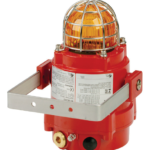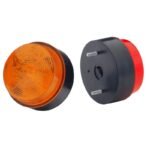Flashing beacons are an important safety tool that are used to grab the attention of drivers and pedestrians on the road. They are most commonly used in situations where extra caution is needed, such as school zones, construction sites, and emergency scenes. Flashing beacons come in a variety of types, each with their own unique purpose and benefits. In this guide, we will explore the different types of flashing beacons, their applications, and the benefits of using them.
Different Types of Flashing Beacons
Flashing beacons can be classified into four main types: strobe lights, LED lights, rotating beacons, and oscillating beacons. Strobe lights are characterized by short, intense bursts of light, while LED lights are brighter and more energy-efficient. Rotating beacons use a rotating mirror to create a flashing effect, while oscillating beacons have a unique oscillating pattern that is intended to catch the attention of drivers.
Applications of Flashing Beacons
Flashing beacons have a wide range of applications, including traffic control, warning signals, and emergency alerts. One of the most common uses of flashing beacons is in school zones, where they are used to alert drivers to the presence of children crossing the road. Flashing beacons are also commonly used at railroad crossings, construction sites, and in areas with heavy pedestrian traffic. In emergency situations, flashing beacons are used to warn drivers of hazards and to direct traffic away from danger.
Benefits of Using Flashing Beacons
There are many benefits to using flashing beacons. One of the main benefits is increased visibility, which can help to reduce the risk of accidents and improve safety on the road. Flashing beacons are also effective at catching the attention of drivers, even in low light conditions. This can be especially important in areas where visibility is limited, such as in heavy fog or during a rainstorm. In addition, flashing beacons can help to reduce congestion on the road by providing clear and concise instructions to drivers.
Best Practices for Installation and Maintenance
Proper installation and maintenance of flashing beacons is crucial to ensure their effectiveness and longevity. Before installing flashing beacons, it is important to conduct a site assessment to determine the best location and type of beacon for the intended application. It is also important to ensure that the beacons are installed in compliance with local regulations and guidelines. Regular maintenance is also important to ensure that the beacons are functioning properly and are visible to drivers. This can include regular cleaning, bulb replacement, and testing of the beacon’s electrical system.
Conclusion
Flashing beacons are an essential tool for improving safety on the road, and their applications are wide-ranging. From school zones to construction sites, flashing beacons are used to alert drivers and pedestrians to potential hazards and reduce the risk of accidents. By understanding the different types of flashing beacons and their benefits, you can make an informed decision about which type of beacon is best suited for your needs. With proper installation and maintenance, flashing beacons can help to make the roads safer and more efficient for everyone.


